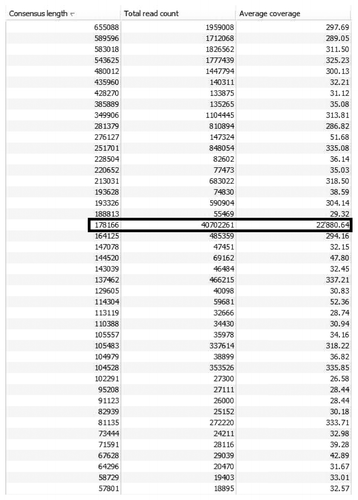Figures & data
Table 1. Summary of bacteriophage shotgun genome sequencing projects
Figure 1. Sanger read pile-up in the assembly of a shotgun library sequencing approach of Listeria phage P70. Image captured from CLC Genomics Workbench 5.1. Upper scale shows sequence length in bp. Green are forward reads, red are reverse reads. Blue are mate-pair reads. Light green and light read color indicates trimmed sequence parts. The coverage plot shows the region of sequence and cloning bias, which features a significant higher coverage (up to 55-fold) than the rest of the contig sequence (2–21 fold).

Table 2. Results of 454 sequencing of bacteriophage genomes A) 16 bacteriophage genomes on one sequencing plate
Figure 2. De novo assembly of approximately 60 million Illumina reads generated for a 178 kb Cronobacter phage. 219 large contigs were produced and at least 20 of them are of similar size or larger than the actual phage genome, which sticks out because of the unusual high sequence coverage of 22,880-fold. Several other assemblies also feature reliable coverage when viewed separately from the rest.
